Life
Bode was the eldest of the landscape painter Georg Wilhelm Bode (1801–1881) and his wife Anna Maria's three sons. From 1848 he studied at the Städel in Frankfurt under Professors Jakob Becker and Johann David Passavant. In 1851 he placed himself under the tutelage of Eduard von Steinle and married Catharina Elisabeth Geiger (1826–1856). After graduating in 1859, he married Catharina's sister Mary Margaret, with whom he had three children. For many years he had a studio at the Städel and in Isenburg Castle in Offenbach, the latter of which inspired numerous exterior and interior views in his paintings.
In 1901 on the day of Bode's seventieth birthday, Grand Duke Ernest Louis of Hesse bestowed upon him the title of Professor.
Bode died 26 July 1906, and was buried in the Old Cemetery in Offenbach. In 2011 Bode's diary, which had been lost during World War II, was found and donated to the Offenbach city archive, which also acquired a bundle with 45 of Bode's graphic depictions of landscapes and historical motifs.
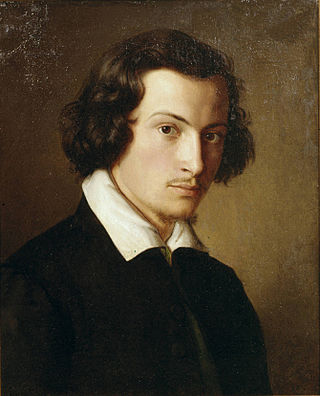
Philipp Veit was a German Romantic painter and one of the main exponents of the Nazarene movement. It is to Veit that the credit of having been the first to revive the nearly forgotten technique of fresco painting is due.

Adam Elsheimer was a German artist working in Rome, who died at only thirty-two, but was very influential in the early 17th century in the field of Baroque paintings. His relatively few paintings were small-scale, nearly all painted on copper plates, of the type often known as cabinet paintings. They include a variety of light effects, and an innovative treatment of landscape. He was an influence on many other artists, including Rembrandt and Peter Paul Rubens.

Moritz Daniel Oppenheim was a German painter who is often regarded as the first Jewish painter of the modern era. His work was influenced by his cultural and religious roots at a time when many of his German Jewish contemporaries chose to convert to Christianity. Oppenheim is considered by the scholar Ismar Schorsch to be in sympathy with the ideals of the Wissenschaft des Judentums movement, because he remained "fair to the present" without denying his past.
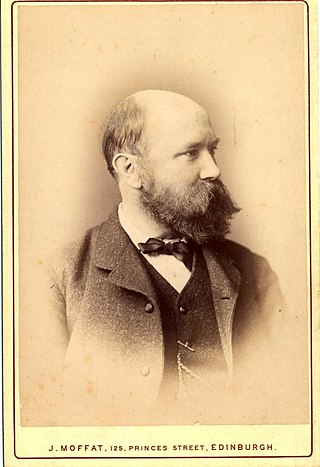
William McTaggart was a Scottish landscape and marine painter who was influenced by Impressionism.

Karl Friedrich Lessing was a German historical and landscape painter, grandnephew of Gotthold Ephraim Lessing and one of the main exponents of the Düsseldorf school of painting.
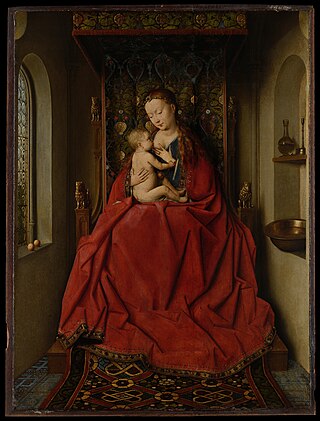
The Lucca Madonna is an oil painting by the Early Netherlandish master Jan van Eyck, painted in approximately 1437. It shows Mary seated on a wooden throne and crowned by a canopy, breastfeeding the infant Christ. Its carpentry suggests it was once the inner panel of a triptych, while its small size indicates it was meant for private devotion. The painting is in the collection of the Städel Museum, Frankfurt.
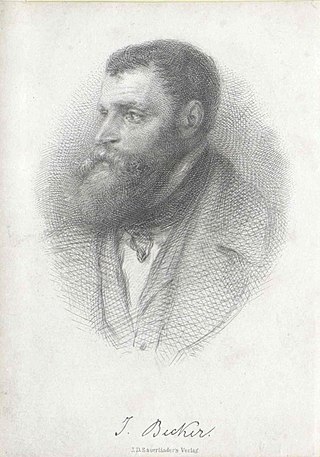
Jakob Becker was a German artist noted mainly for his genre paintings of peasants.

The denomination Upper Rhenish Master refers to an artist active ca. 1410–20 possibly in Strasbourg. The most famous painting of the artist is Paradiesgärtlein, a mixed-technique painting on oakwood, 26.3 x 33.4 cm, now in the Städel Museum. The painting is the Städel's most famous example of the old German school.
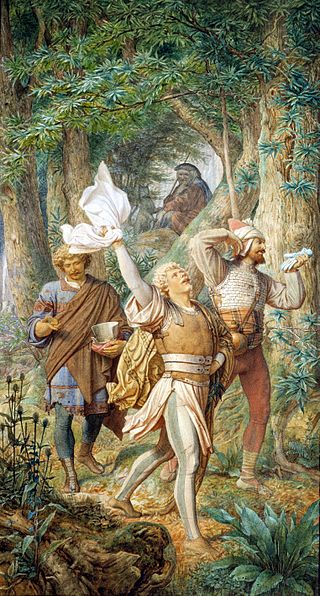
Joseph Ferdinand Becker (1846–1877) was a German painter.

Joos van Winghe, Jodocus a Winghe or Jodocus van Winghen (1544–1603) was a Flemish painter and print designer. He is known for his history paintings, portraits, allegories and genre scenes, including merry companies. He worked in Brussels as court painter and left Flanders after the Fall of Antwerp in 1584. He then worked in Frankfurt for the remainder of his career. In Germany he enjoyed the patronage of Holy Roman emperor Rudolf II and adopted a more clearly Mannerist style.
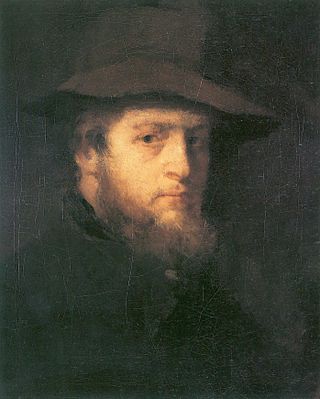
Victor Müller (29 March 1829 – 21 December 1871 was a German painter.

Karl Philipp Fohr, a brother of Daniel Fohr, was a German painter, born at Heidelberg in 1795.
Karl Friedrich Lippmann was a German painter of the New Objectivity, known for landscapes and portraits.

The Heller Altarpiece was an oil on panel triptych by German Renaissance artists Albrecht Dürer and Matthias Grünewald, executed between 1507 and 1509. The artwork was named after Jakob Heller, who ordered it. Dürer painted the interior, Grünewald the exterior.

Carl Peter Burnitz was a German landscape painter who began as a lawyer.

Heinrich Funk (1807–1877) was a German landscape painter.

Anatolian animal carpets represent a special type of pile-woven carpet, woven in the geographical region of Anatolia during the Seljuq and early Ottoman period, corresponding to the 14th–16th century. Very few animal-style carpets still exist today, and most of them are in a fragmentary state. Animal carpets were frequently depicted by Western European painters of the 14th–16th century. By comparison of the few surviving carpets with their painted counterparts, these paintings helped to establish a timeline of their production, and support our knowledge about the early Turkish carpet.
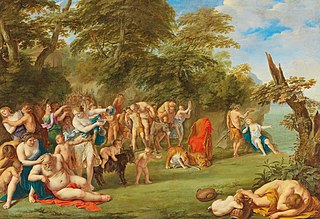
Peter van Halen or Pieter van Haelen (1612–1687) was a Flemish painter. He was known for his italianate landscapes with historical, allegorical and mythological scenes with many figures. His works were stylistically influenced by French Classicism.

The Torgauer Altar, Torgau Altarpiece or Altarpiece of the Holy Kinship is a triptych altarpiece painted by Lucas Cranach the Elder in 1509.

Thomas Bayrle is a German sculptor, painter, graphic artist and video artist. He is known as a pop artist.
This page is based on this
Wikipedia article Text is available under the
CC BY-SA 4.0 license; additional terms may apply.
Images, videos and audio are available under their respective licenses.
























